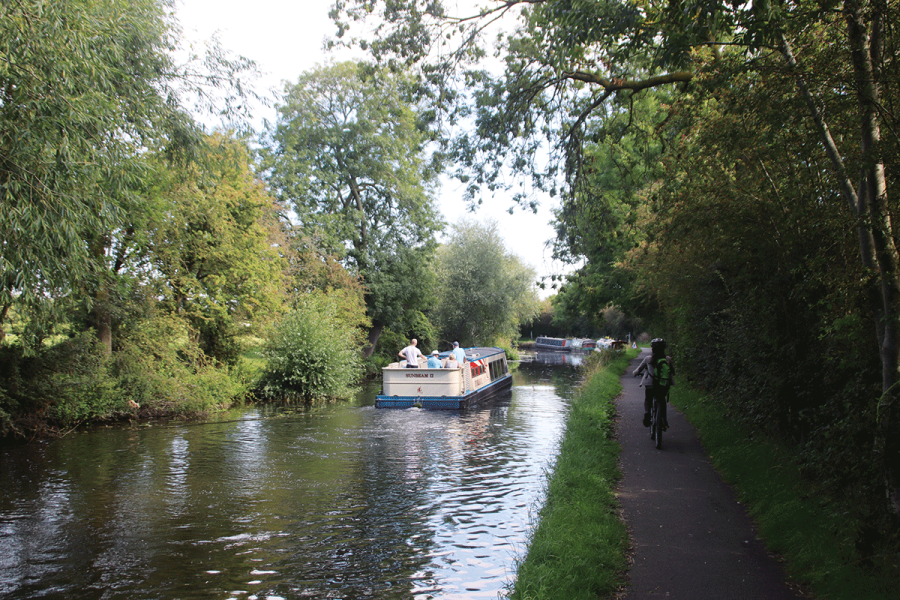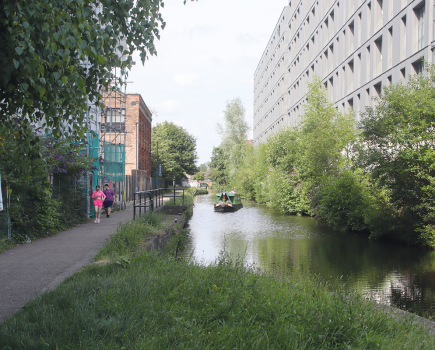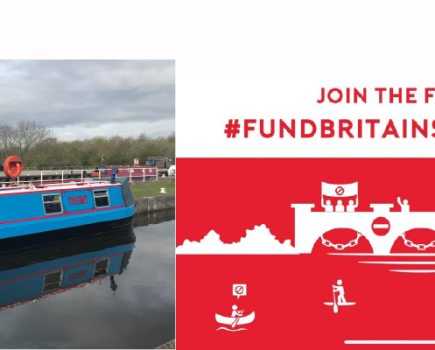After the remote hills and lock flights of the southern length covered in Part One last month, it’s all change in Leicester city for the contrasting River Soar section leading northwards to Loughborough and the Trent.
Words and Pictures by Martin Ludgate
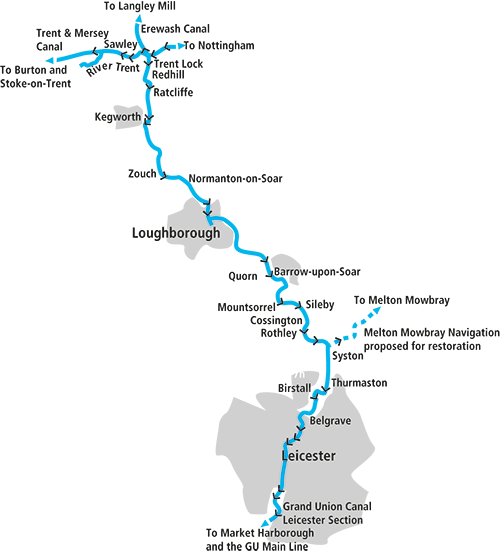 The city of Leicester is the starting point for this second section of our cruise guide to the Leicester Line (or Leicester Section) of the Grand Union Canal. It’s also where our route undergoes a transformation from a canal to a river navigation based on the River Soar.
The city of Leicester is the starting point for this second section of our cruise guide to the Leicester Line (or Leicester Section) of the Grand Union Canal. It’s also where our route undergoes a transformation from a canal to a river navigation based on the River Soar.
But it’s more complicated than that – both practically and historically. In practical terms, the last few miles of canal which we followed down into Leicester last month were sufficiently tied up with the River Soar that boaters need to be aware that this section can experience flooding or strong currents after heavy rain; by contrast, some of the sections through Leicester, although they form part of a waterway based on the River Soar, are actually artificial canal sections.
Historically, it’s even more complicated – the route consisted of four separate waterways opened at different dates, and we’re following them ‘back to front’, from the newest to the oldest. At Leicester, a cast iron Grand Junction Canal Company ‘zero miles’ marker indicates where we leave what was originally the Leicestershire & Northamptonshire Union Canal, opened in stages between 1797 and 1809, and join the Leicester Navigation.
This river-based waterway was opened in 1794, to extend navigation on the river upstream from Loughborough to Leicester. It skirts the western and north western fringes of the city centre, with secure (accessible by Canal & River Trust ‘Watermate’ key) visitor moorings within a walk of shops and attractions. Leaving the city via a lengthy canal section, the waterway passes through a formerly heavily industrial length, with old factories alternating with redevelopment sites. Three shallow locks begin the gentle descent towards the Trent, and the navigation rejoins the river at Belgrave.
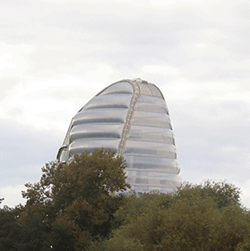 National Space Centre
National Space Centre
Set in a futuristic building built to house the rockets that form its largest exhibits, the Centre tells the story of the space race, the history of rocketry, and Britain’s contribution to it. There are displays on the Solar System, how humans are affecting the Earth, and a planetarium.
A curious futuristic-looking tower visible to the west is the National Space Centre (see inset), which may (depending on size of boat) be accessible by water via a backwater above Belgrave Lock, but otherwise it’s walkable from the main line of the navigation. While you’re there, the Abbey Pumping Station Museum (housing four restored beam engines which used to pump Leicester’s sewage) is also worth a visit.
Leicester’s urban area is now being left behind, and the river passes through an attractive area of water meadows, lakes created in former gravel pits, and nature reserves. Thurcaston Old Bridge dates from the 15th Century, although it has since been widened on both sides, while to the north west it’s a short walk to Leicester North Station for the Great Central Railway’s steam trains. A meandering river section (with some bends to make things interesting for those in full-length craft) passes through Watermead Country Park and skirts Birstall, before Thurmaston Lock leads to a lengthy canal cut running past Syston.
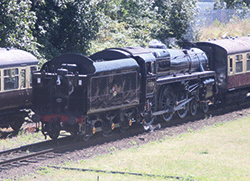 Great Central Railway
Great Central Railway
Easily accessible from the waterway at either of its terminus stations at Loughborough Central and Leicester North, this heritage railway has an emphasis on re-creating the ‘main line’ experience, with powerful steam locomotives hauling historic carriages on double track lines. There is also a museum in the station at Loughborough.
Here, another waterway used to join the Soar: from around 1797 to 1877, the River Wreake was navigable via 12 locks to Melton Mowbray, and for an even shorter period from 1803 until its route was partly used for a railway line in 1846 the Oakham Canal linked it to the town of that name. The Melton & Oakham Waterways Society hopes to revive navigation on the Wreake, but in the meantime you can see it coming in on the right under a towpath bridge, rebuilt a few years ago with full navigable headroom (albeit a boom currently prevents access under it) to perhaps one day allow boats to return to this little-known waterway.
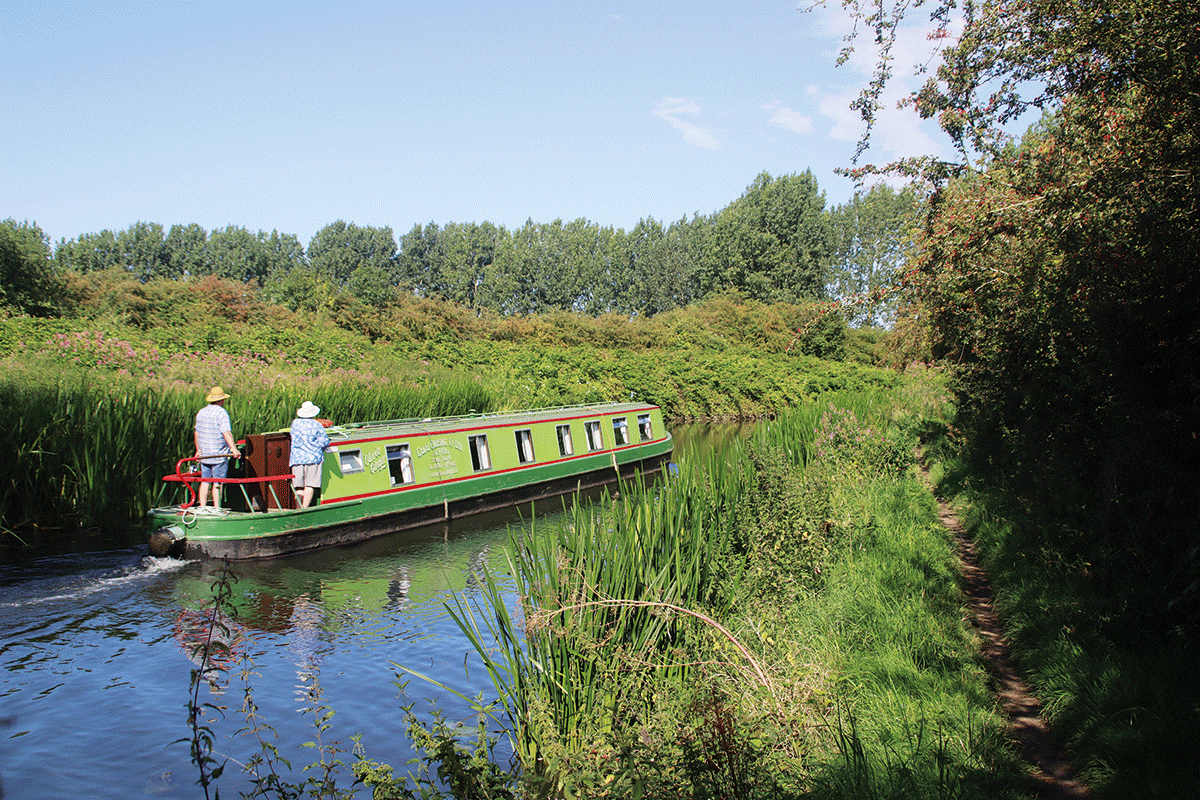
A quiet rural length near Cossington
Our route now follows the Wreake downstream via Junction Lock (named because this was the junction with the former waterway) to rejoin the River Soar at Cossington. The village of Rothley, Cossington, Sileby and Mountsorrel are all set back from the river to avoid the floodplain, but not a long walk away. Sileby Lock is an attractive spot with the mill still standing nearby, while Mountsorrel Lock has a popular lockside pub. And just beyond, a railway line crosses on an impressive red brick viaduct. I nearly said “a disused railway”, but that’s not quite true: although it no longer has any rails, the bridge still carries a conveyor belt which takes stone from quarries to sidings on the main line railway.
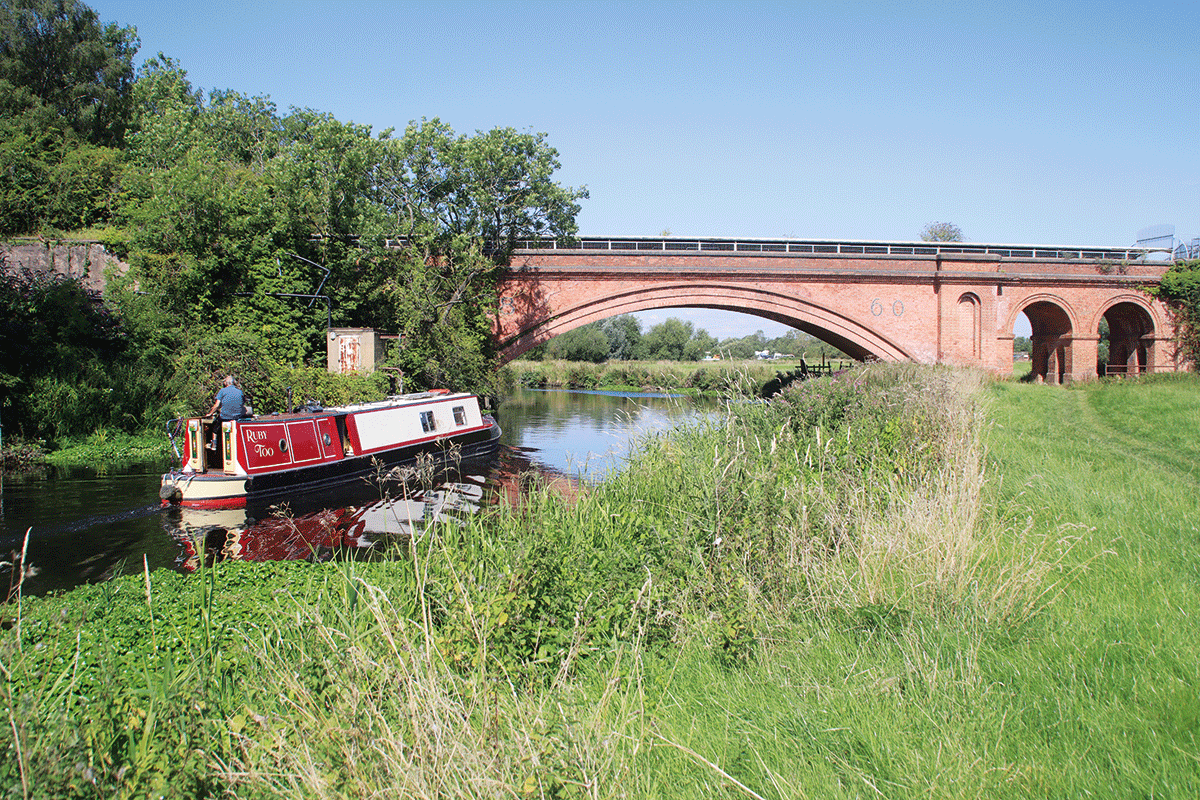
Approaching the railway viaduct at Mountsorrel
The approach to Barrow-upon-Soar is a popular stretch of river on a fine summer’s day, with trip-boat, day-boats and small craft including some pedalos cunningly disguised variously as sports cars and swans!. The navigation runs alongside the centre of Barrow, a handy village with shops and a selection of pubs, before passing the flood lock at the start of the longest canal section on the Soar. A two mile cut (protected by a flood lock at the entrance, which may be open at both ends – leave the gates as you find them, and the paddles as per the signs) leads into Loughborough, the only town on the river between Leicester and the Trent. A traditionally industrial town well supplied with shops and pubs, it also provides convenient access to the northern terminus of the Great Central Railway for the steam trains, and it’s the location of the country’s last remaining bell foundry.
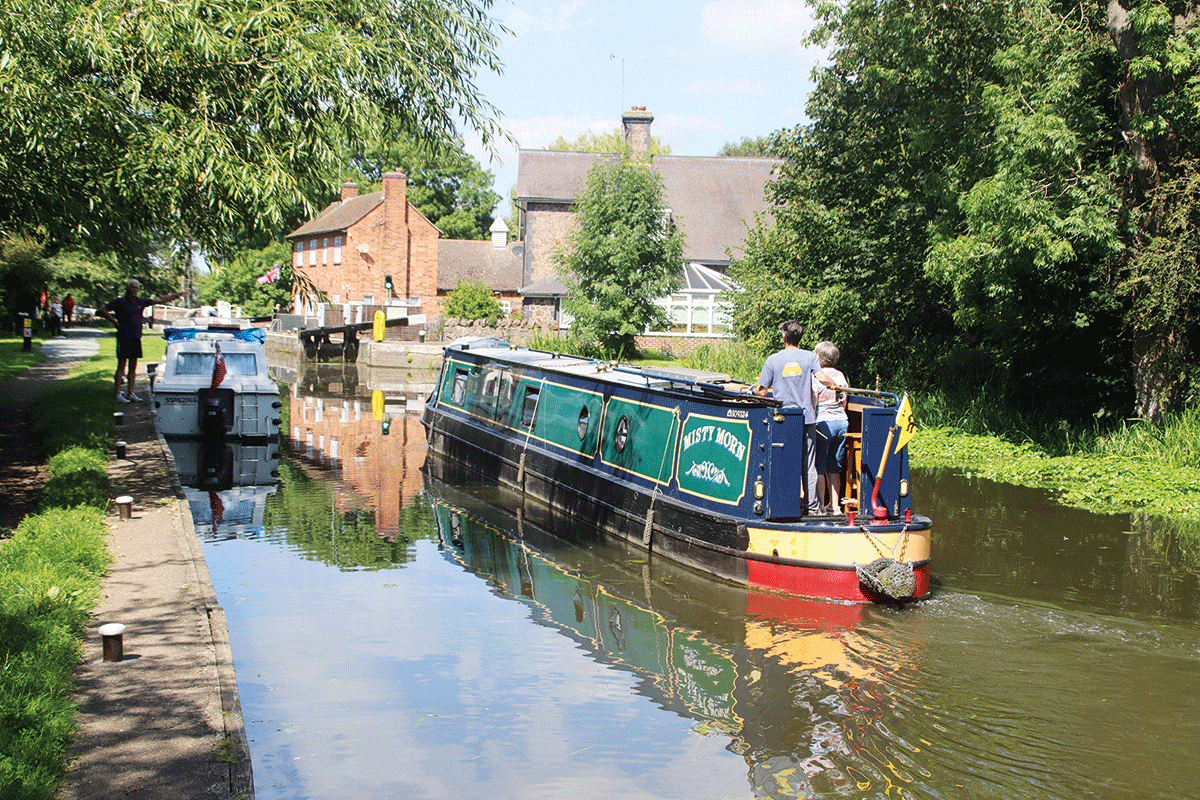
Entering Barrow Deep Lock
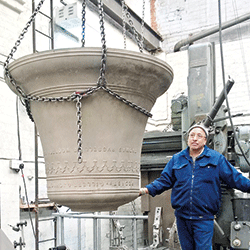 Loughborough bell foundry
Loughborough bell foundry
This is now the last working historic bell foundry in the country; its bells are hung in nearly every cathedral in England and in thousands of parish church towers. It’s open to public tours, but you will need to book in advance: see belltrust.co.uk
And having followed a long, gentle curve around the north side of the town centre, the waterway reaches a T-junction where we meet the fourth and last of the string of historically separate waterways which made up today’s Leicester Line. This is the Loughborough Navigation, opened as long ago as 1778.
Turning left at the T-junction leads into a short dead-end to the original terminus of the Loughborough Navigation at a small basin surrounded by some rather bright modern buildings, a short walk from the town centre. This, incidentally, was the starting point for the little-known ‘Forest Line’ of the Leicester Navigation, a part-canal part-tramroad route which we explore in our Cruise Guide Extra article on page 54. Turning right at the T-junction continues the through route northwards towards the Trent, and Loughborough’s urban area is soon left behind as Loughborough Lock and Bishop Meadow Lock lead us back out onto the River Soar.
Although it was historically a different waterway there’s no great change to the river – it’s slightly wider now, but still an attractive route meandering across its flood-plain as it generally leads northwards. But one less welcome thing that we noticed on a recent trip is that it’s been suffering from invasive floating pennywort weed, which can build up in floating mats from the river banks to the point where it slows down navigation – although we also noticed that there had been plenty of work going on to clear the weed and keep a channel open.
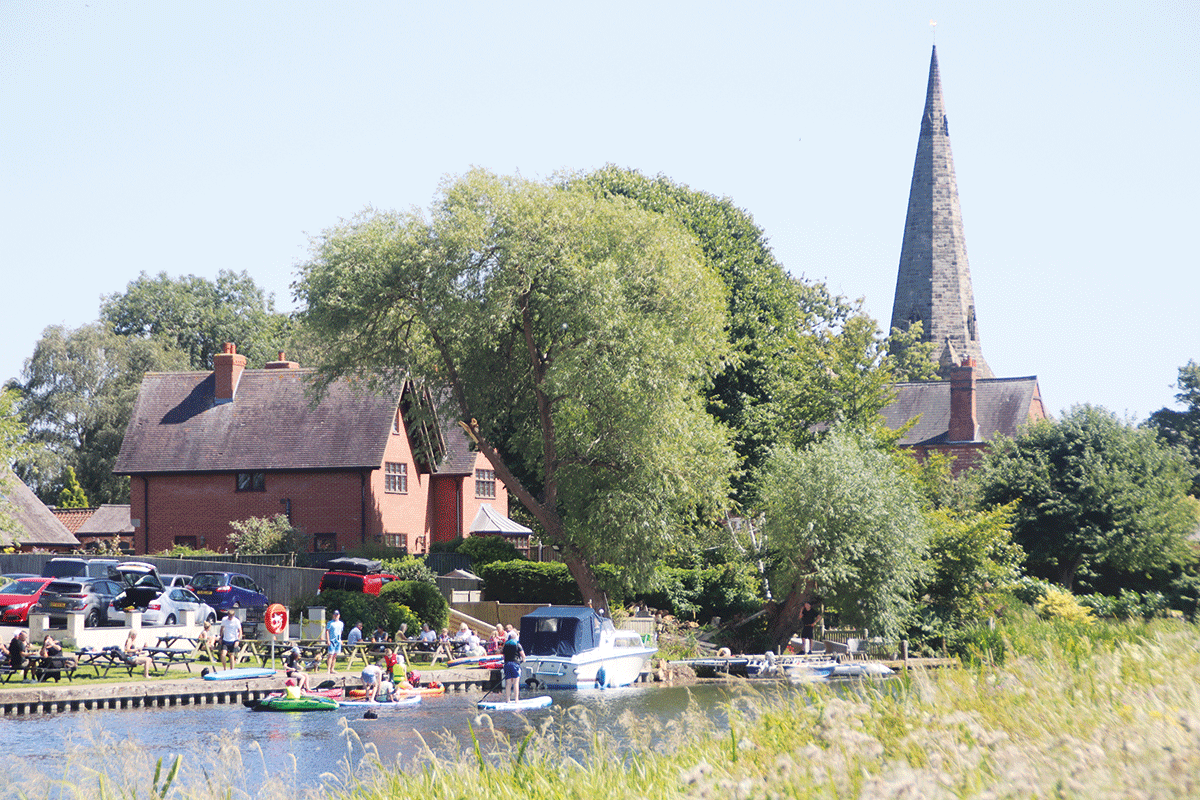
The river at Normanton is popular with small craft in fine weather
Locks are less frequent as the river’s descent becomes gentler, and there are several inviting waterside pubs as it passes Normanton and Zouch to reach Kegworth. Look out for the attractive riverside church at Normanton. This is another length popular with small craft in good weather – be aware of the chain ferry that sometimes operates across the river.
In less good weather, particularly if you’re navigating after heavy rain, you should also be aware of the warning lights and indicator boards to show when the river is in flood, and the emergency refuge moorings provided as somewhere safe to wait for the levels to fall. It’s something that the river has had a bit of a reputation for, although you’ll see evidence of flood control schemes which have helped to improve matters over the years.
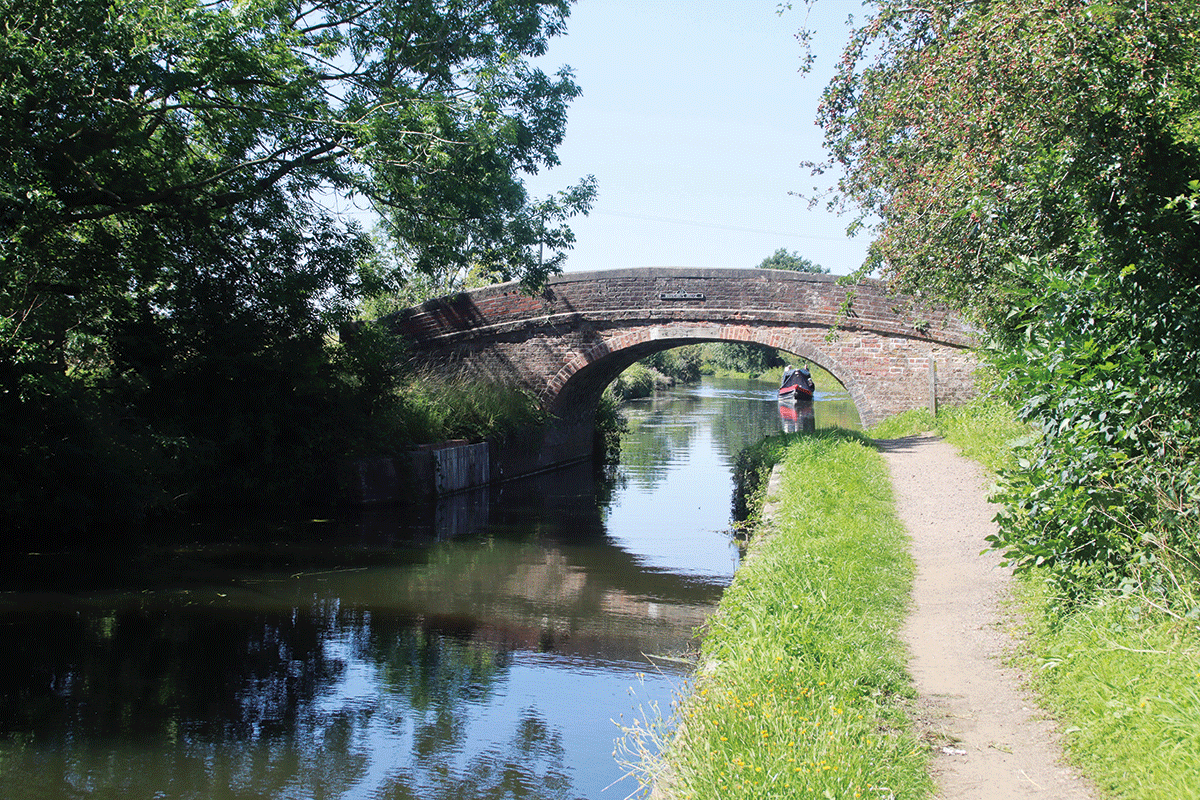
On the long canal cut leading into Loughborough
Kegworth has two locks – Kegworth Deep Lock and Kegworth Shallow Lock; the shallow lock is now a flood-lock, which again is usually open at both ends in summer months; the deep lock was replaced by a new lock a number of years ago, but the old chamber can still be made out alongside it (and the same is true at Ratcliffe Lock). There’s a waterside pub near the shallow lock, and Kegworth village with shops and more pubs is just up the hill from there.
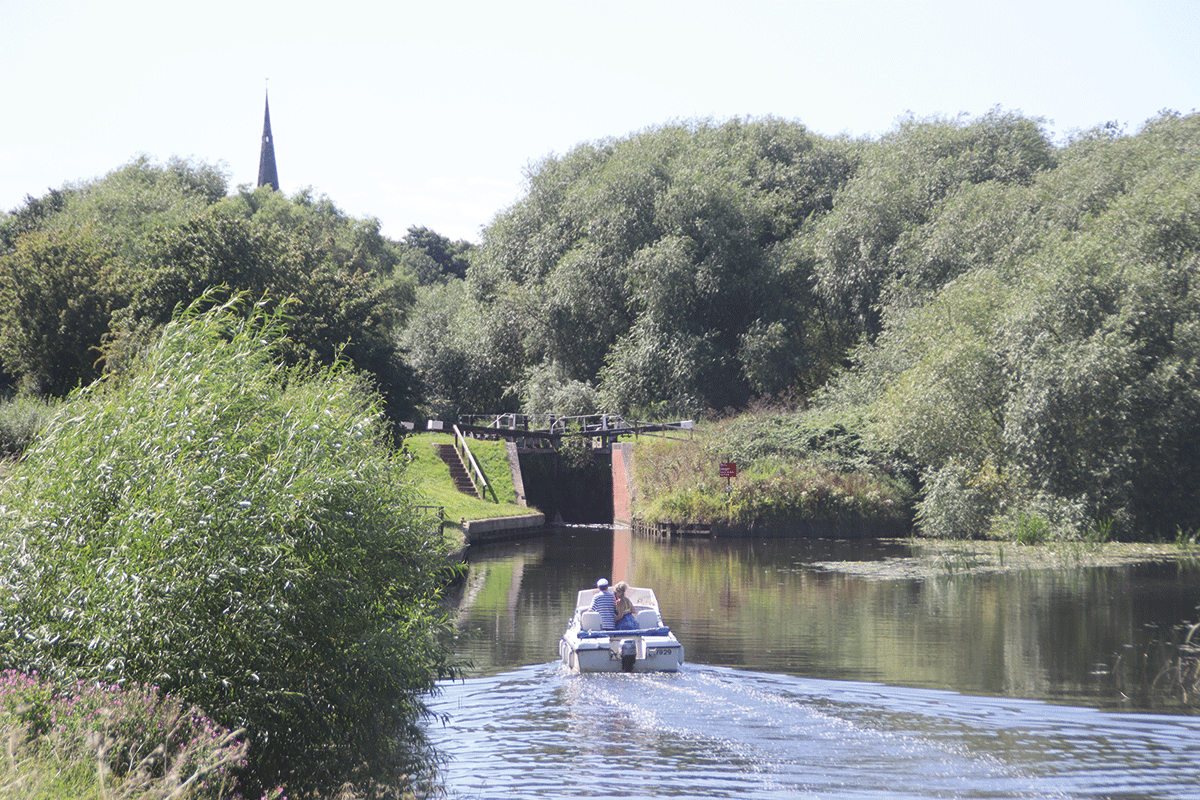
Kegworth Deep Lock, rebuilt in the 1980s for flood control (the old lock is hidden in the undergrowth on the right)
The final couple of miles past Ratcliffe are characterised by gentle windings, views of the huge cooling towers of the power station (one of the last in operation of what used to be a string of power stations stretching the length of the Trent Valley), and another former lock at Redhill which is now usually open at both ends. From there it’s just half a mile to where the Soar meets the Trent at a slightly complicated four-way junction. You’ll actually meet the weir stream for Thrumpton Weir first, so turn immediately left whichever way you’re heading. Then bear left to follow the Trent upriver to Shardlow and the Trent & Mersey Canal; straight ahead for Trent Lock leading to the Erewash Canal to Langley Mill; or sharp right for Cranfleet Cut to follow the Trent downstream to Nottingham and beyond.
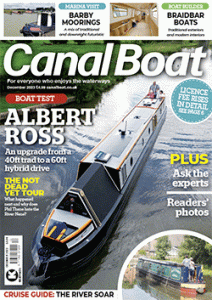 As featured in the December 2023 issue of Canal Boat. Buy the issue here
As featured in the December 2023 issue of Canal Boat. Buy the issue here

